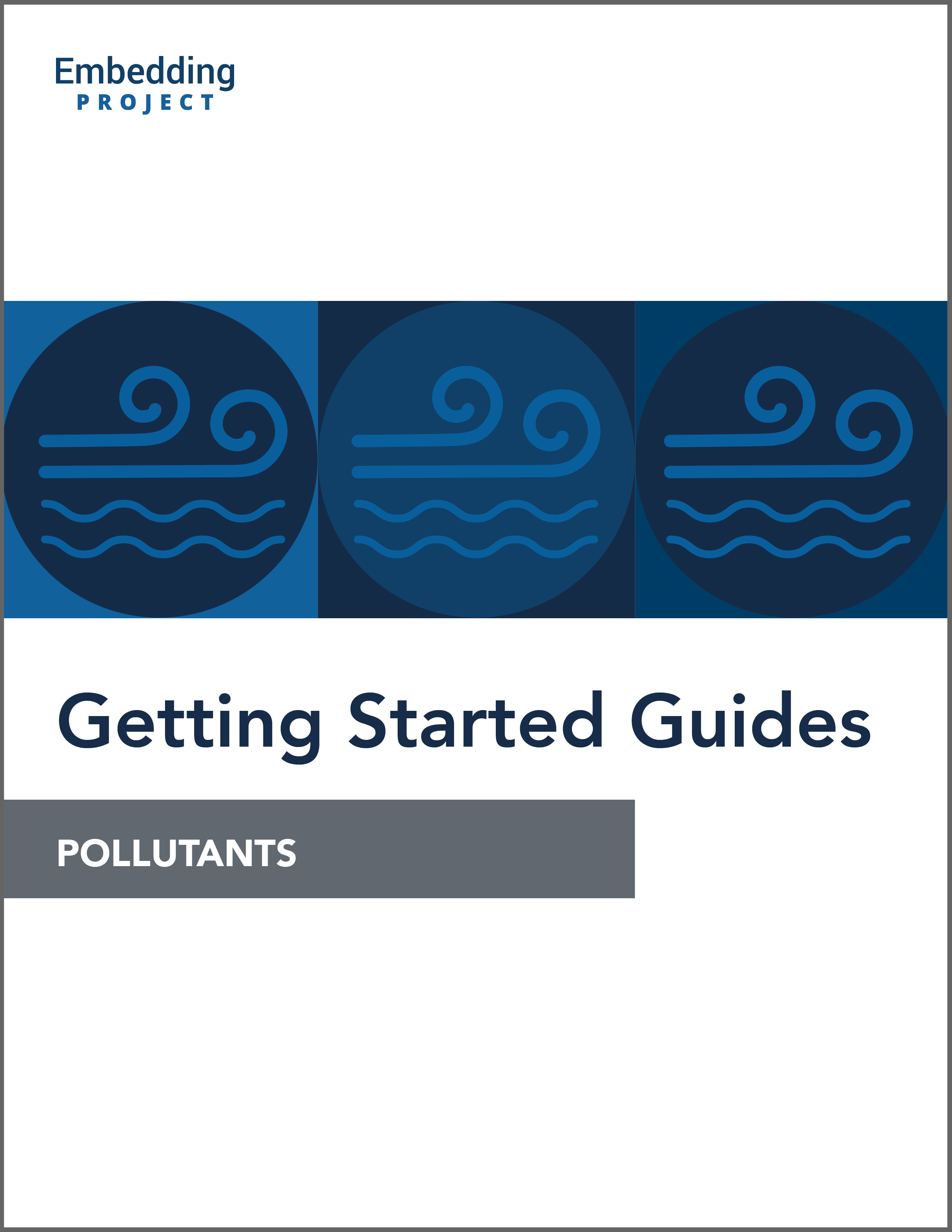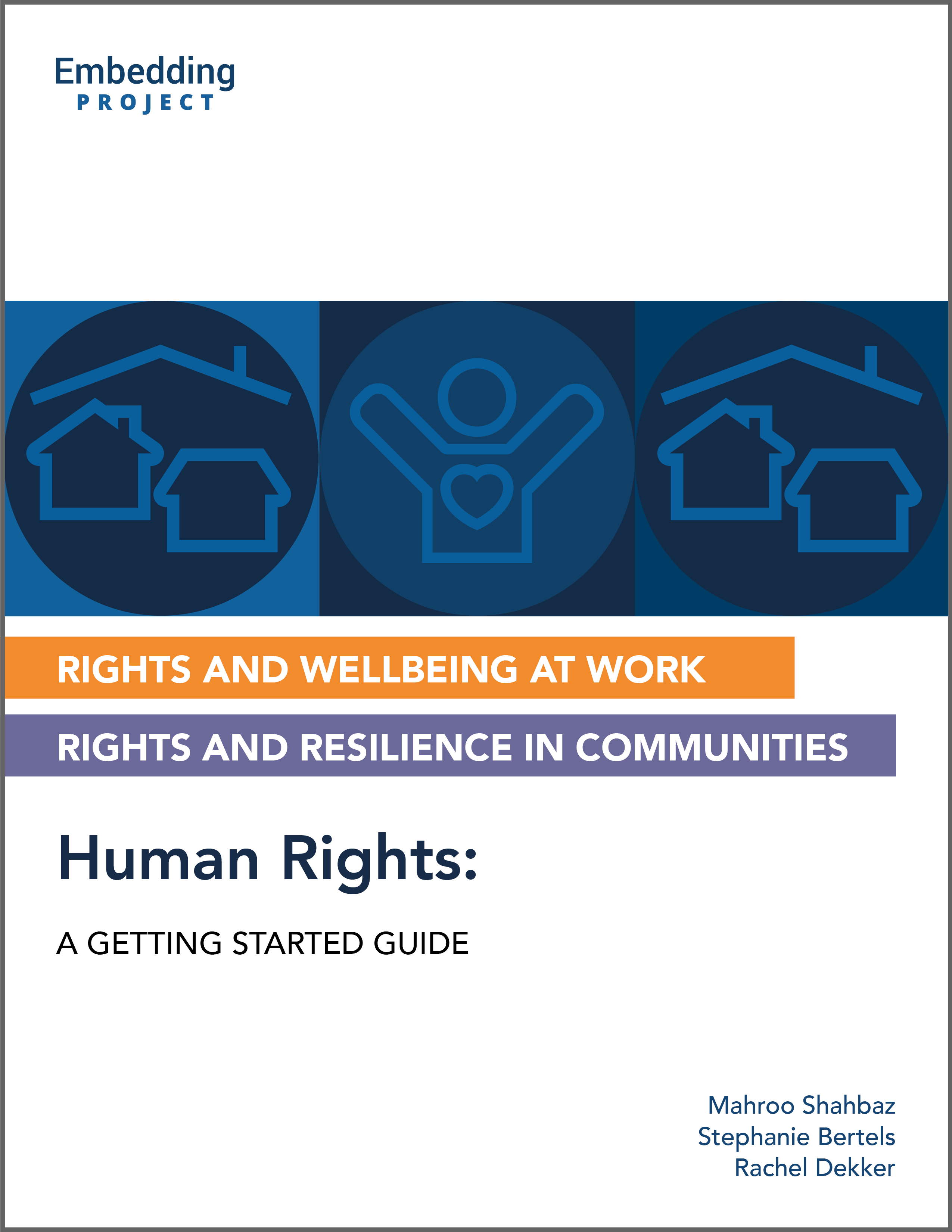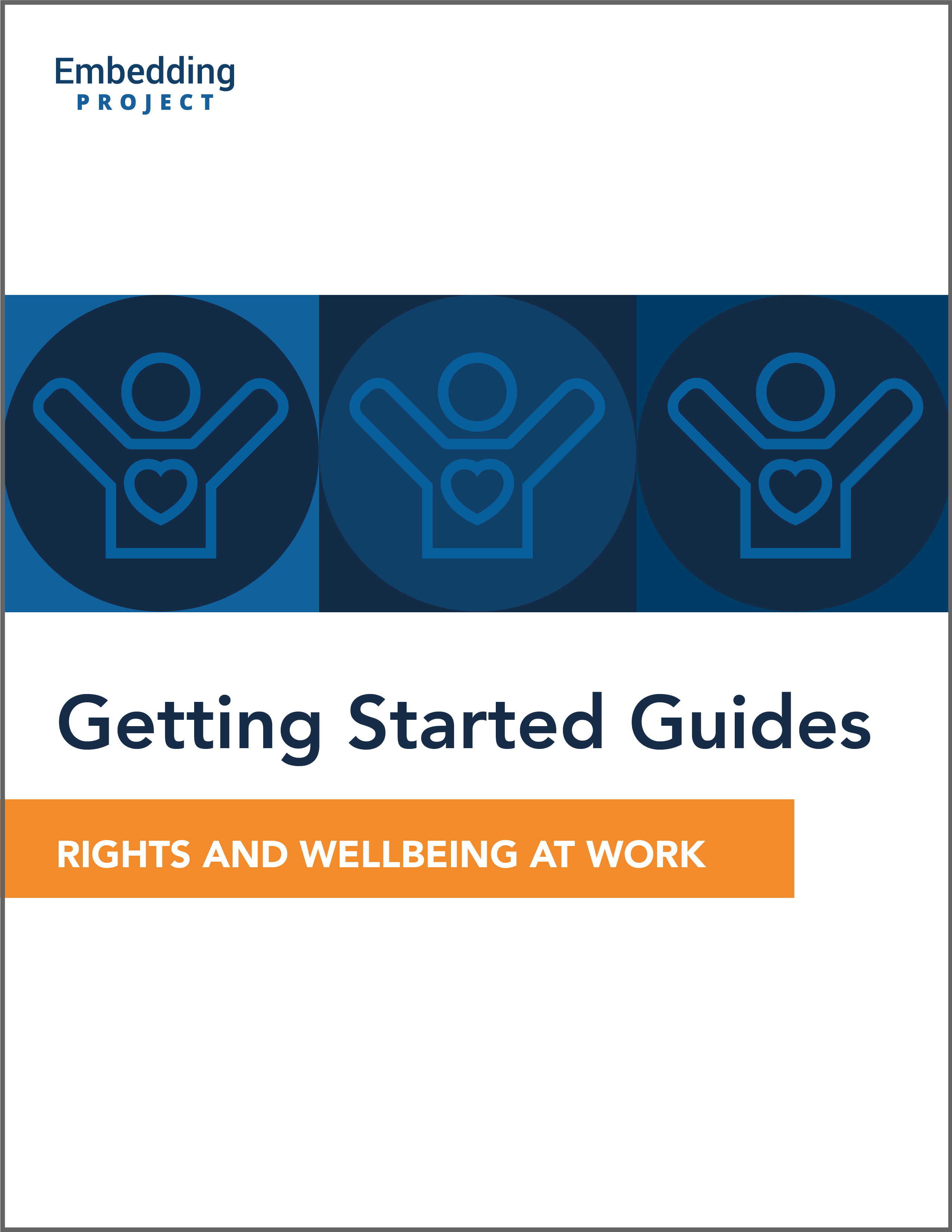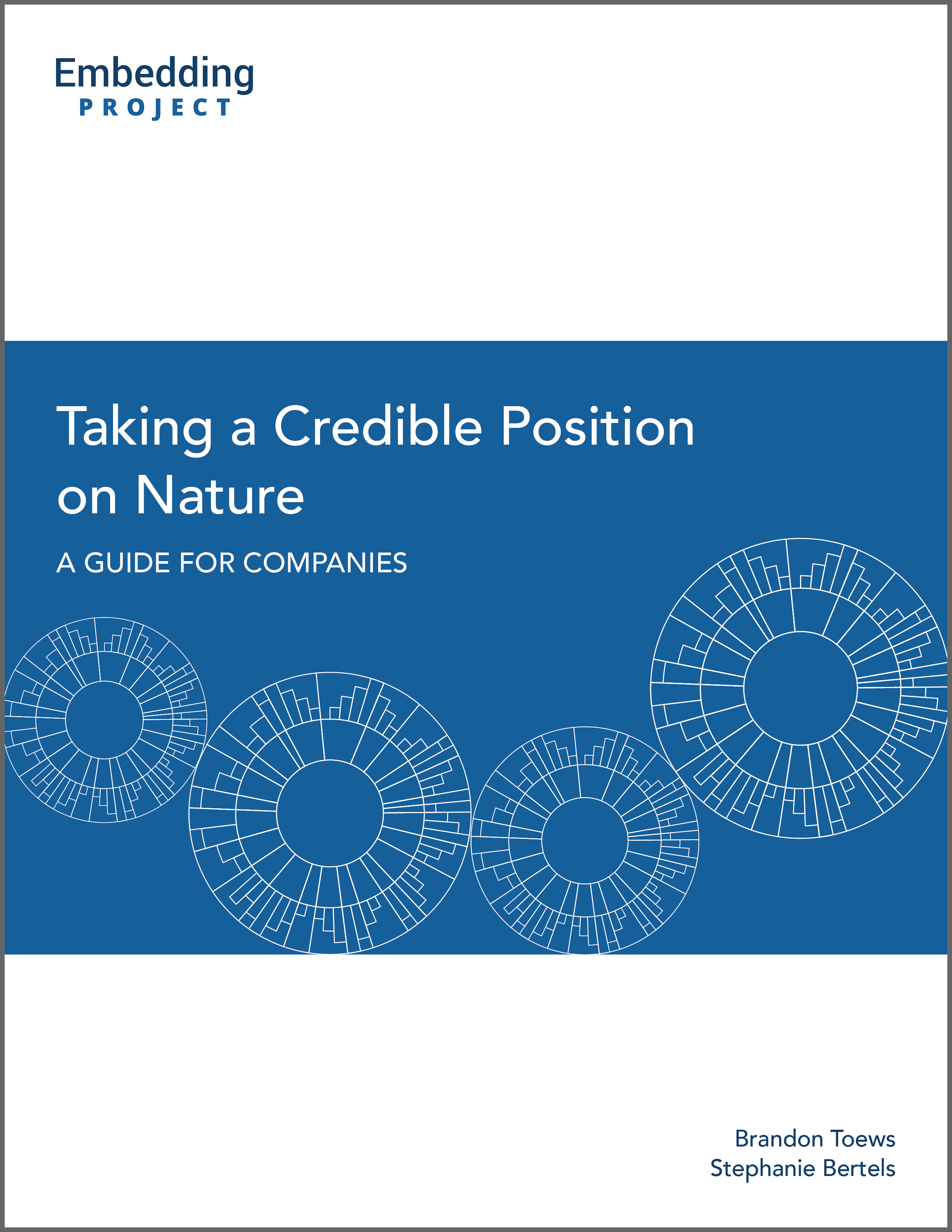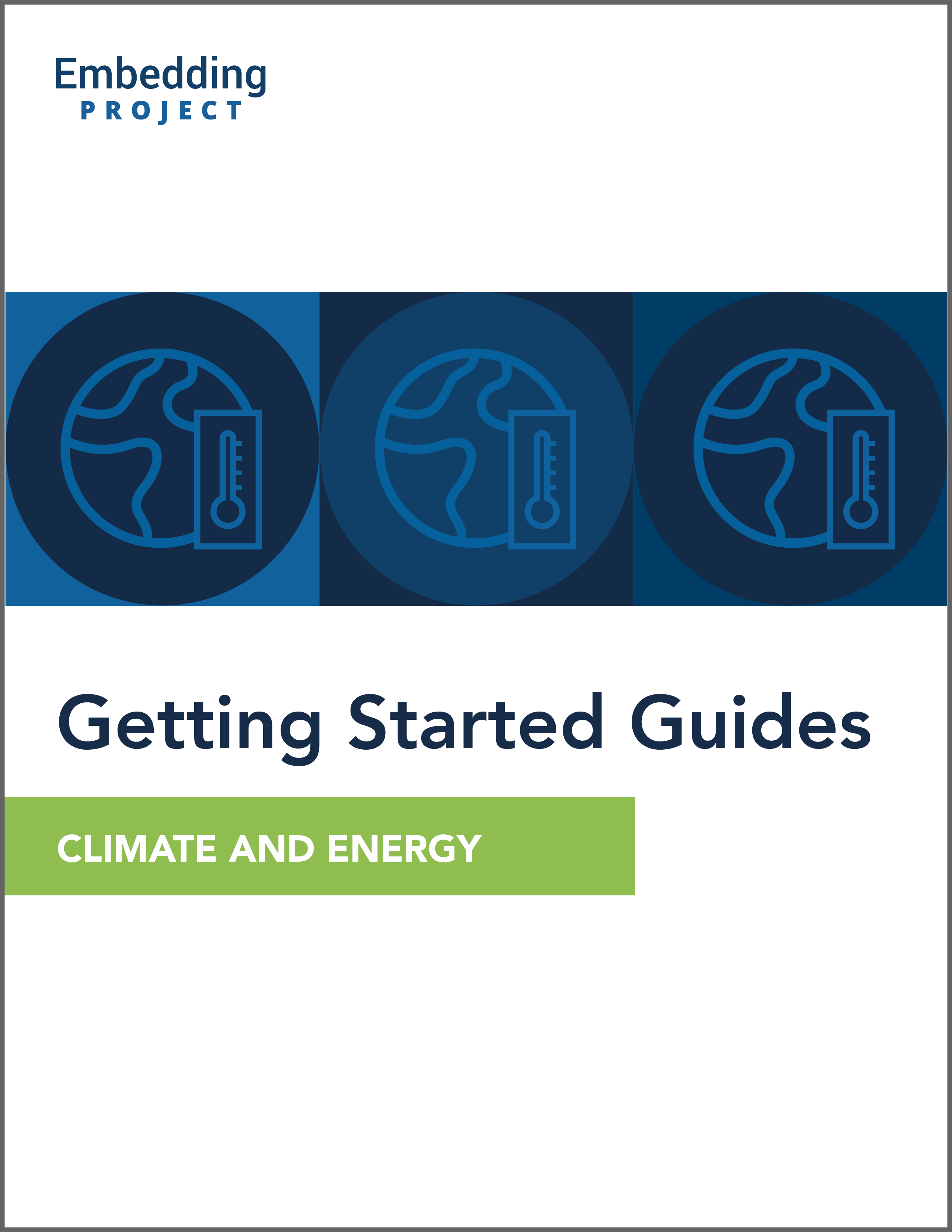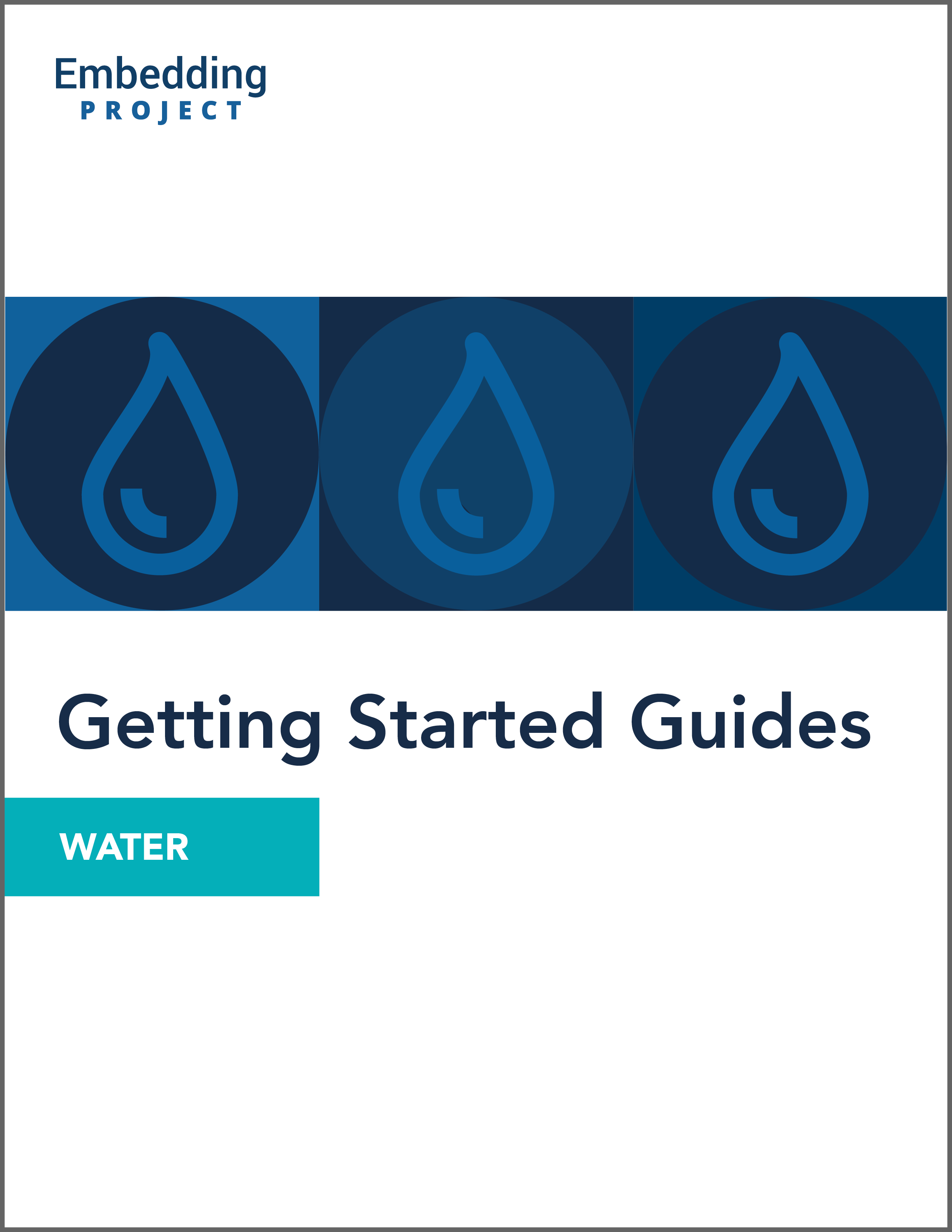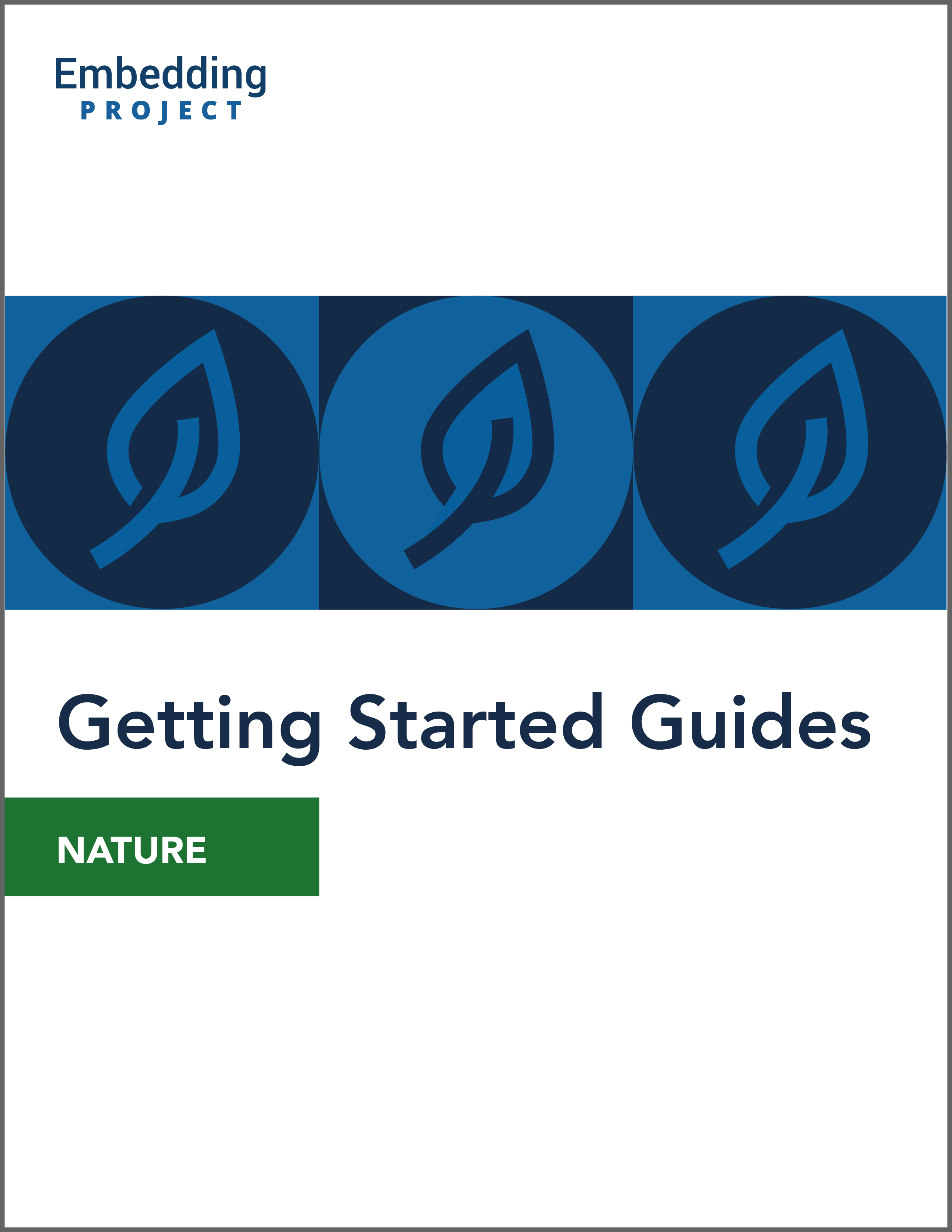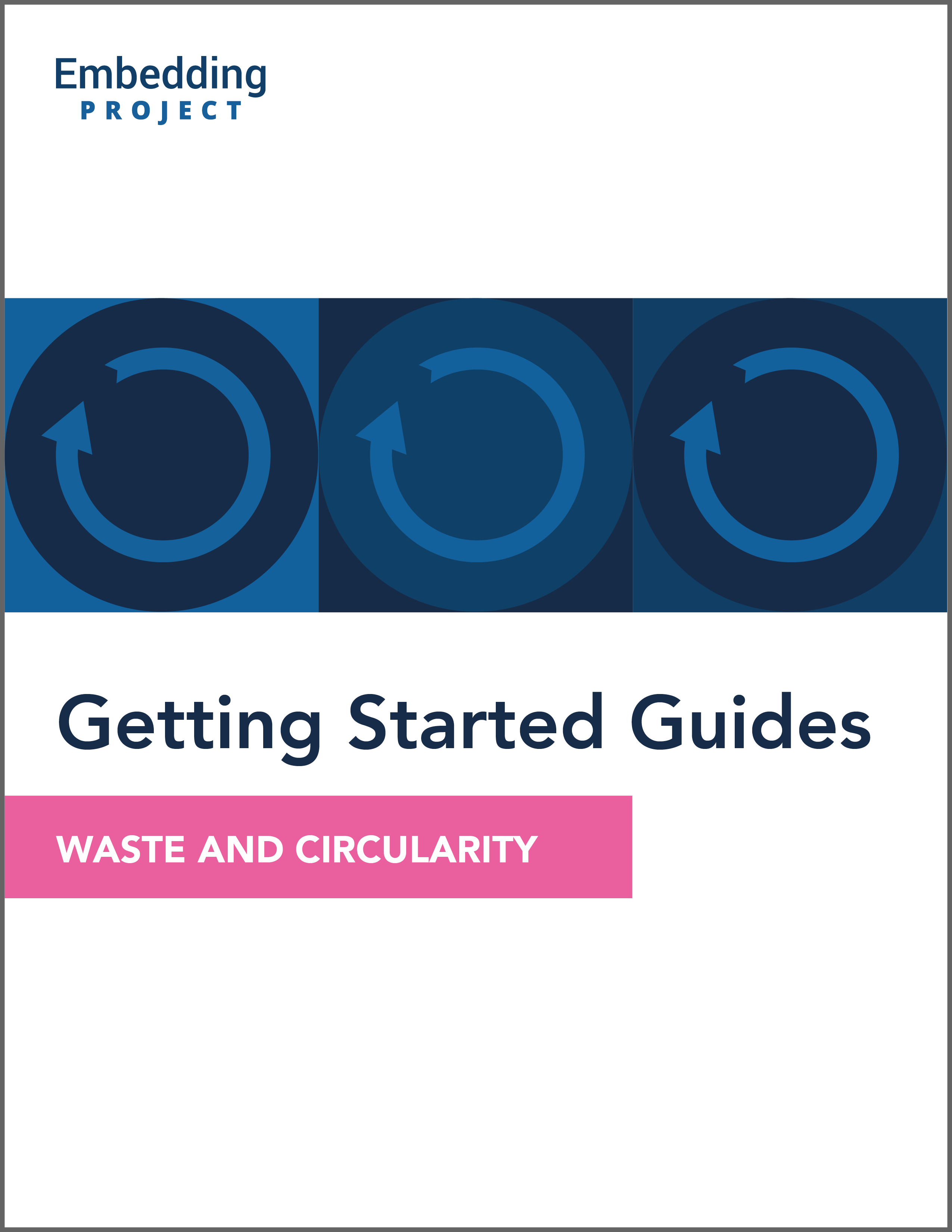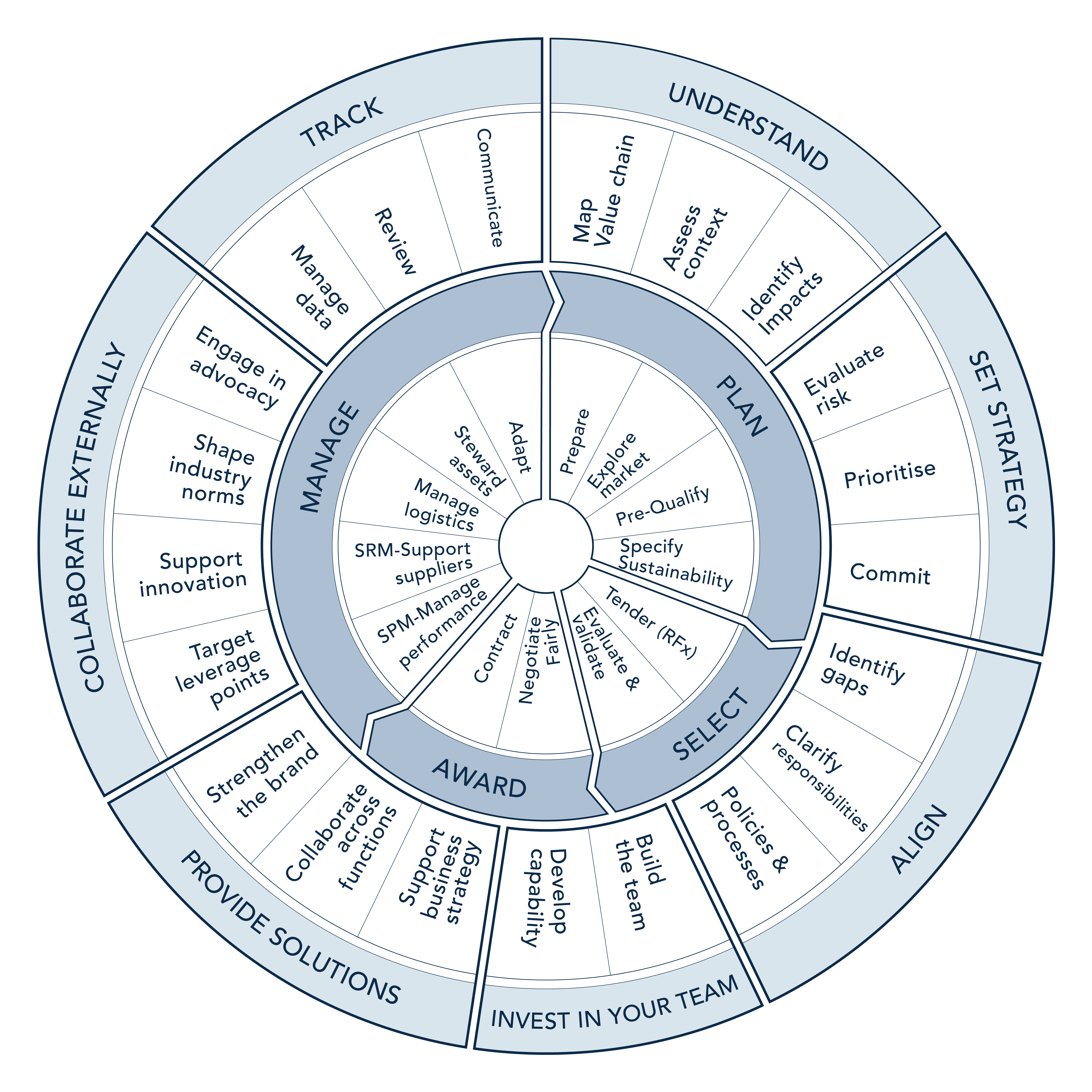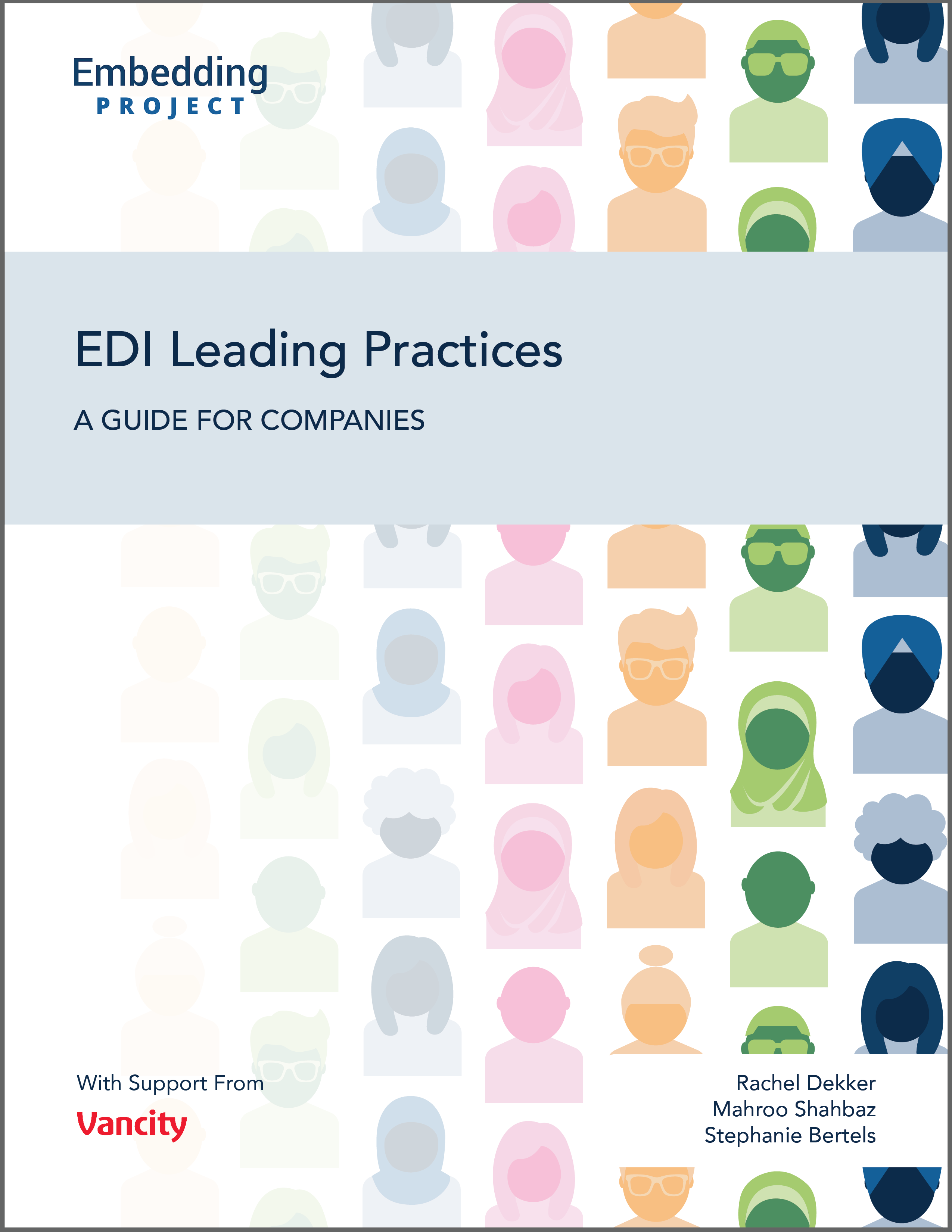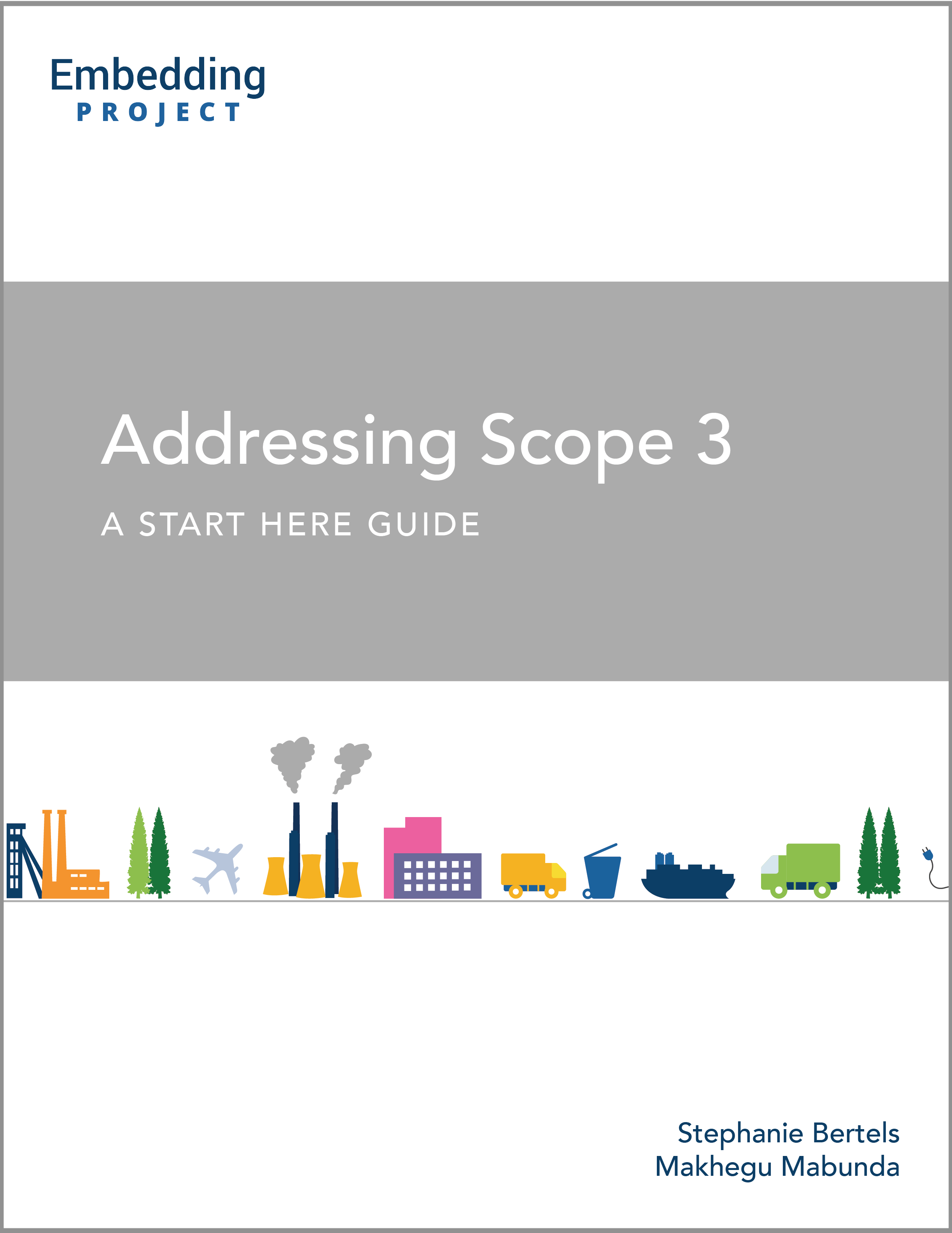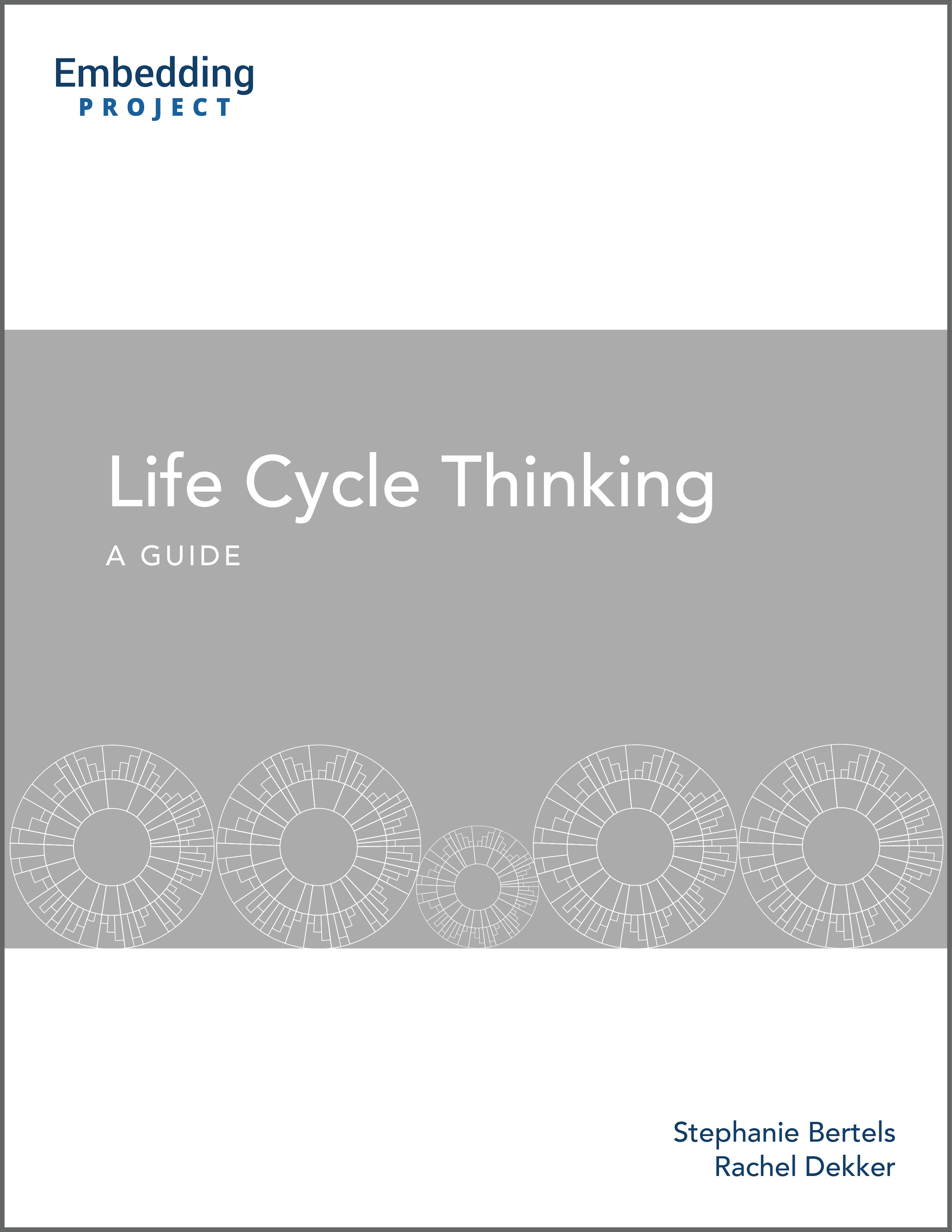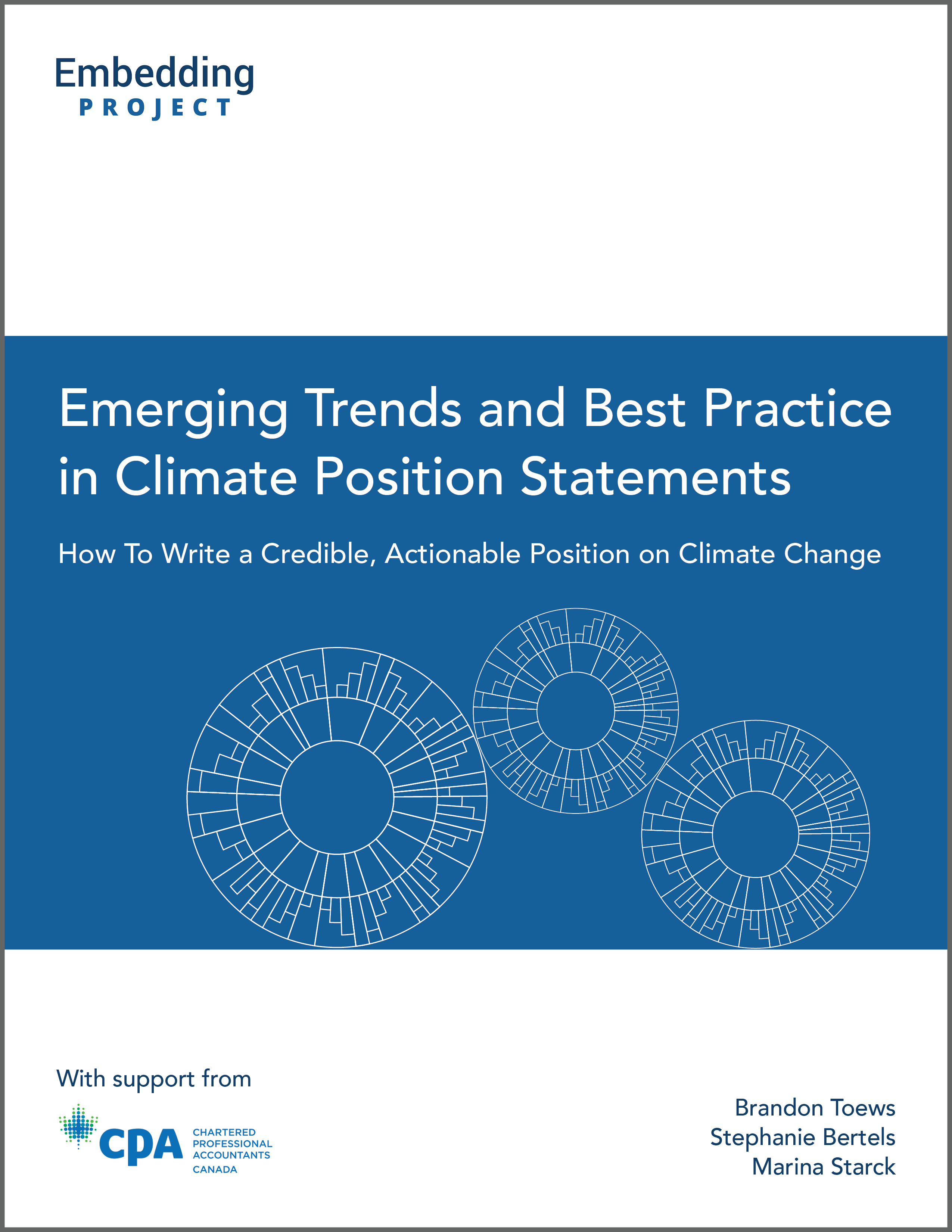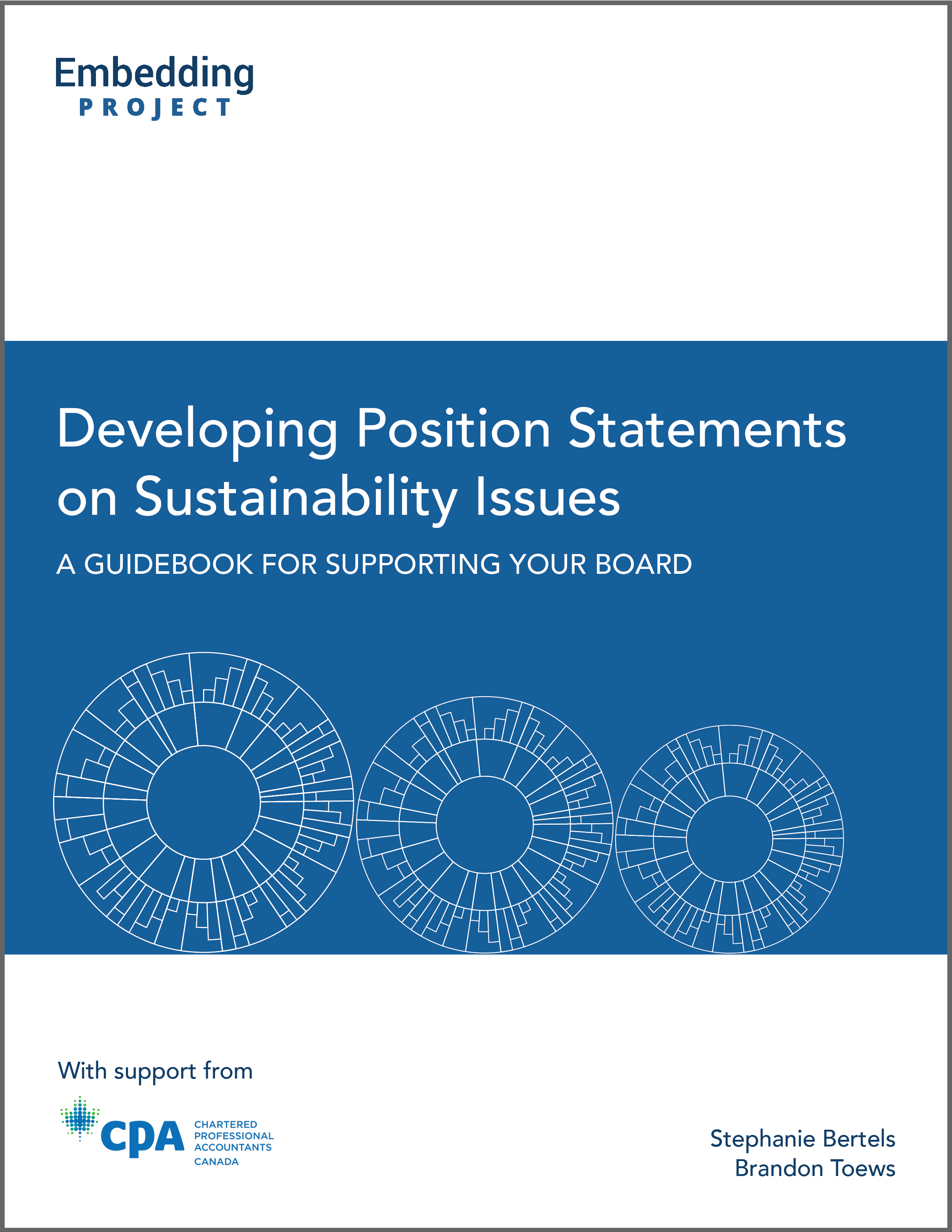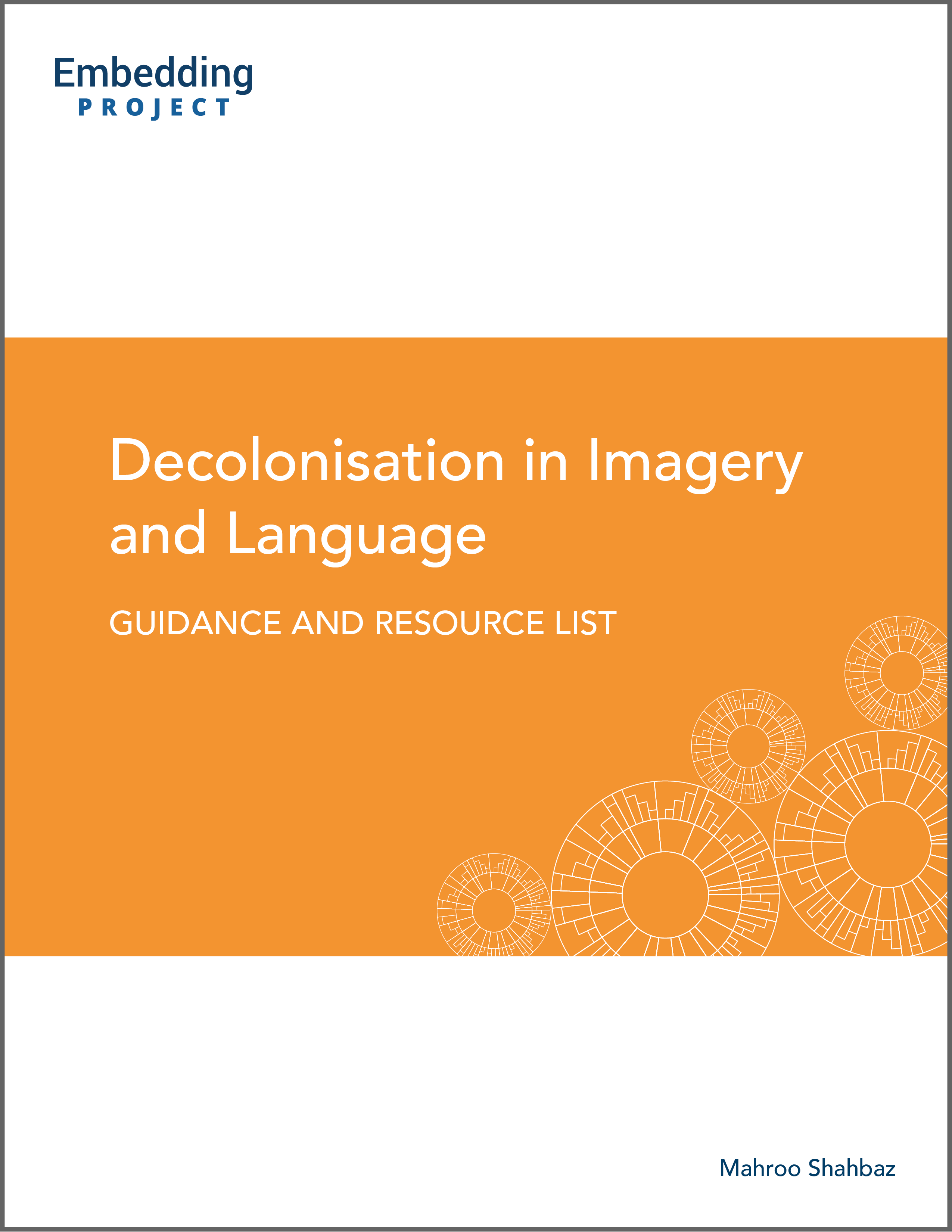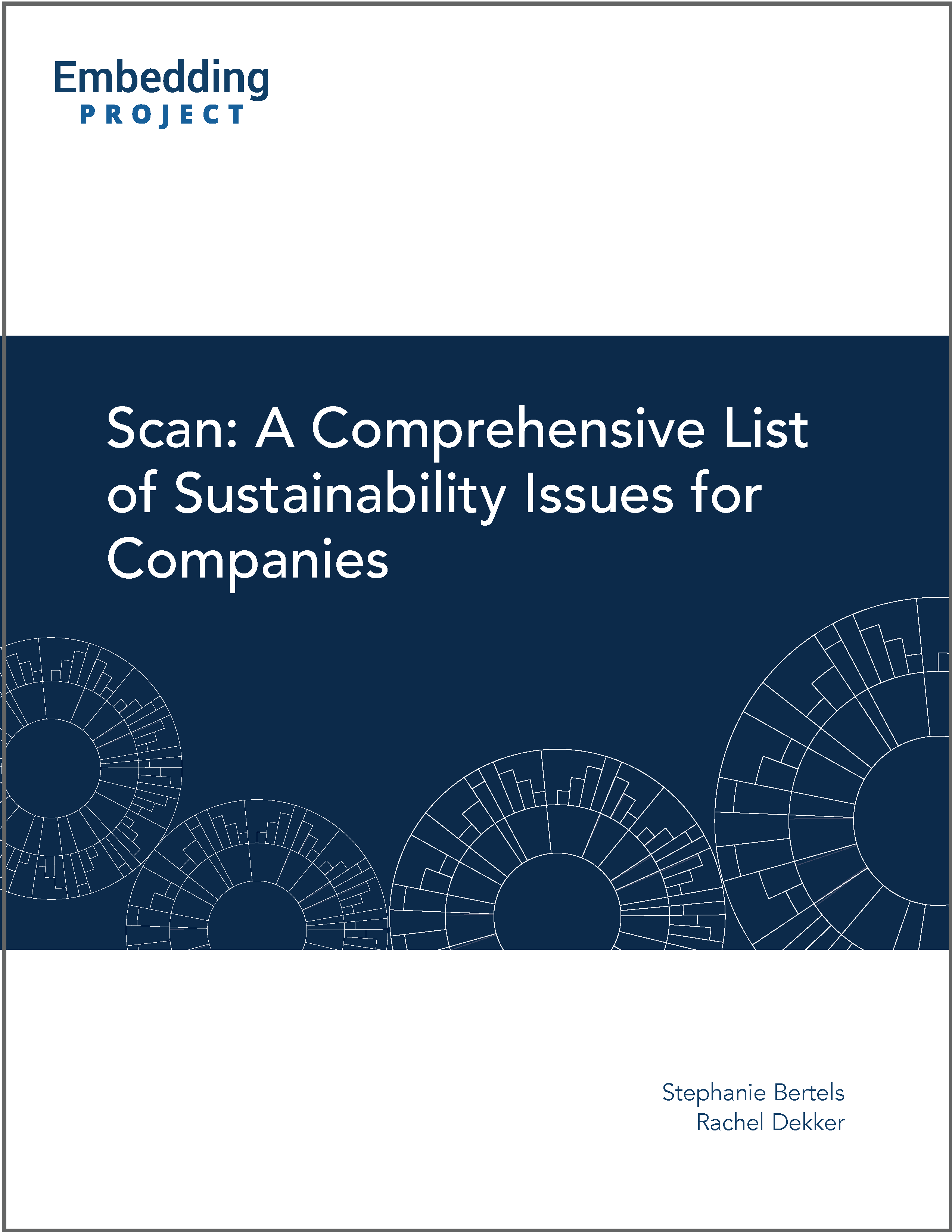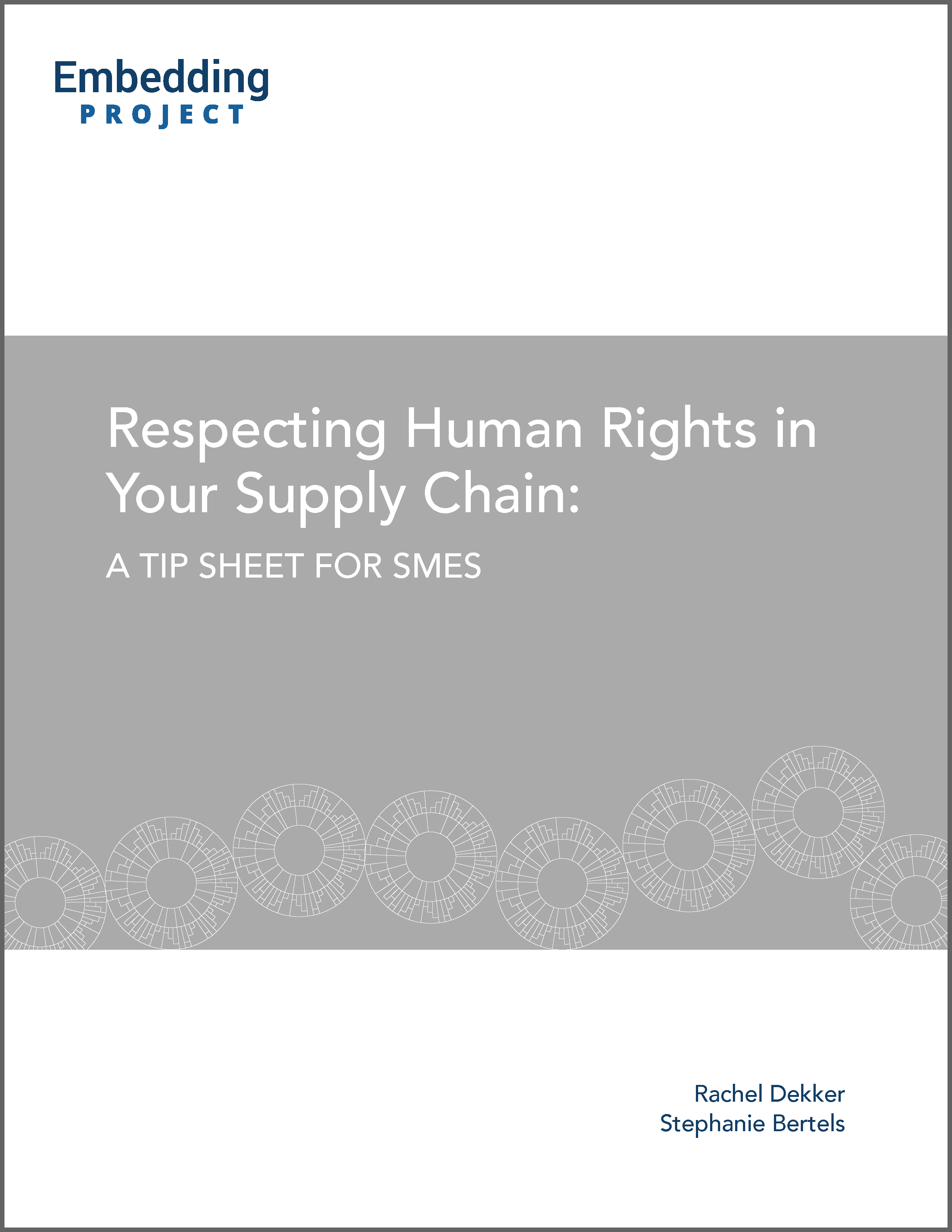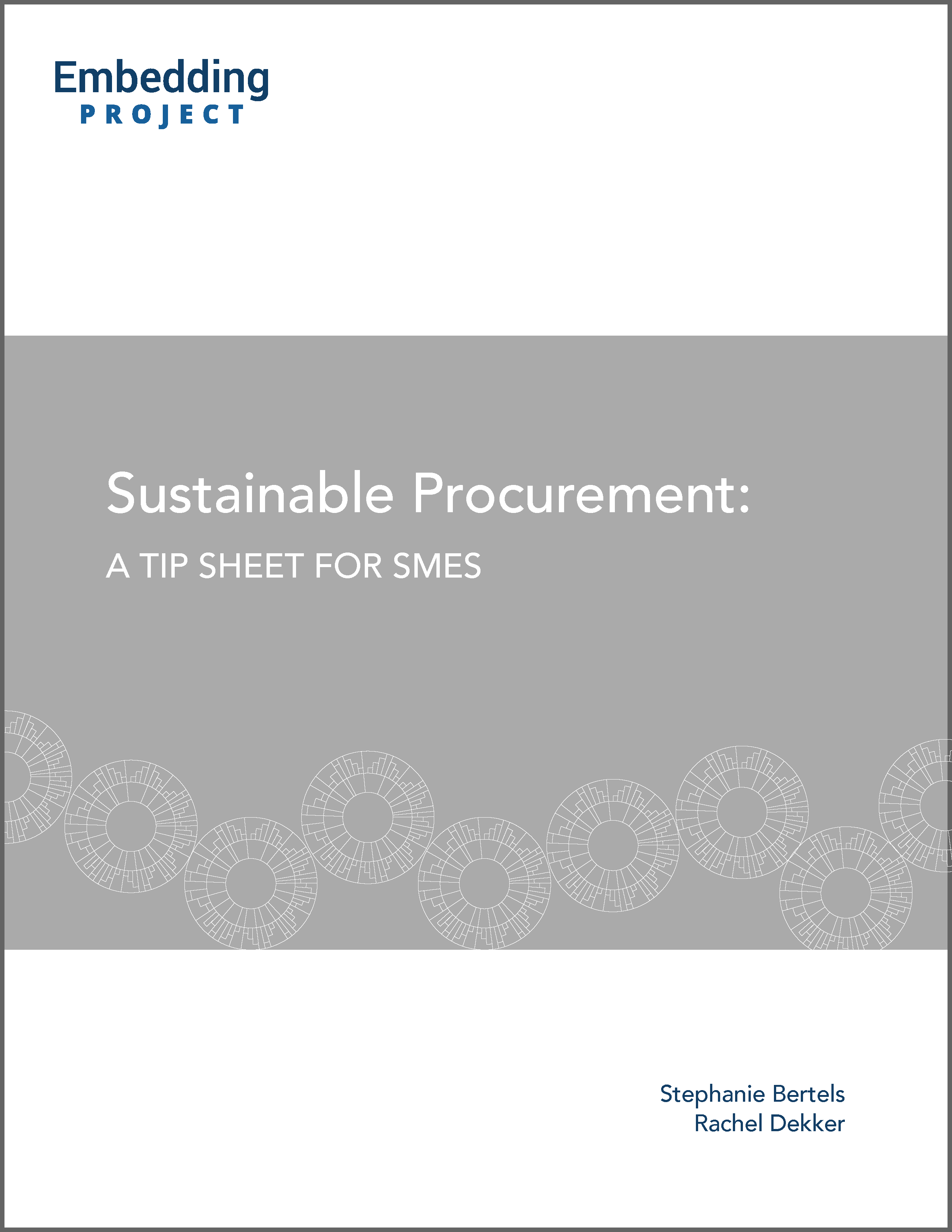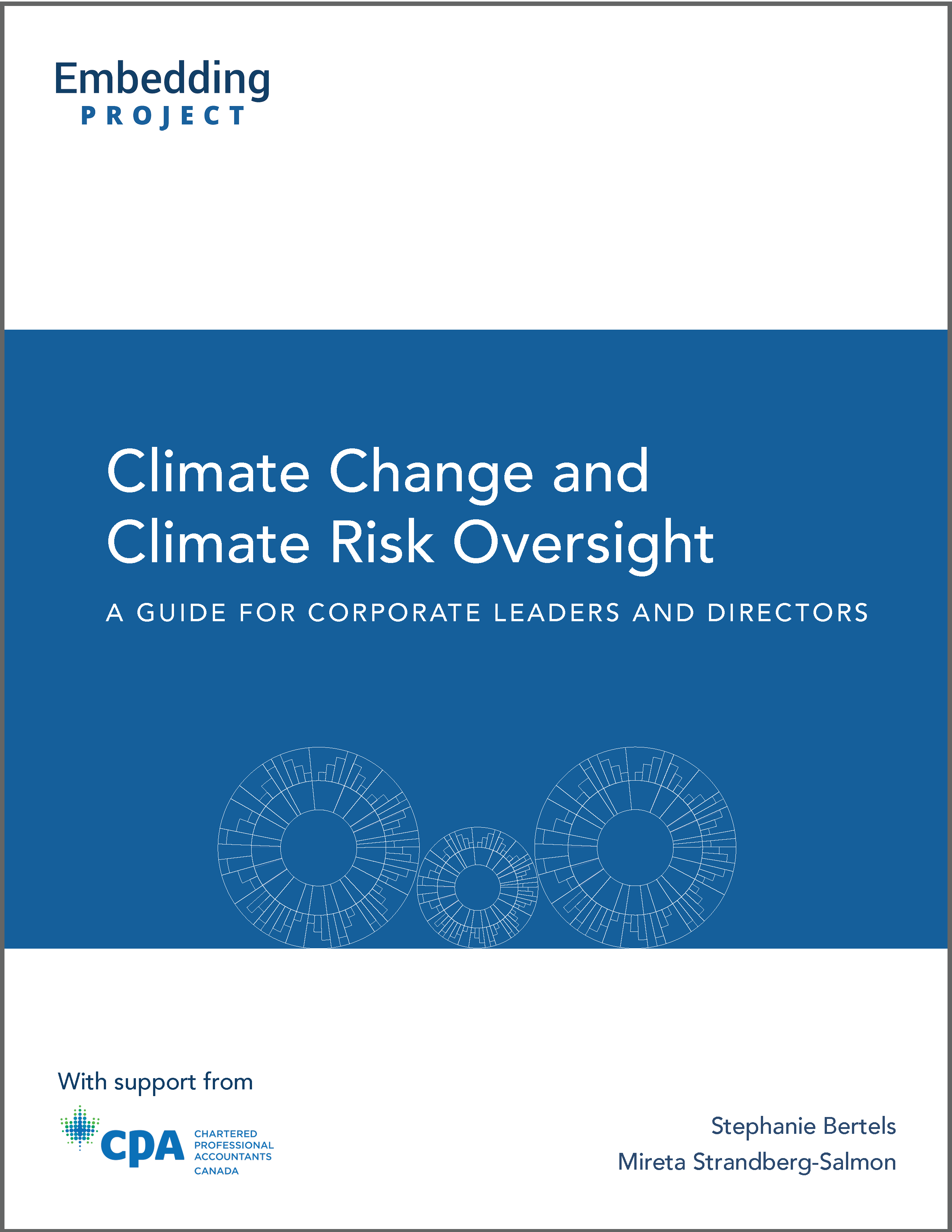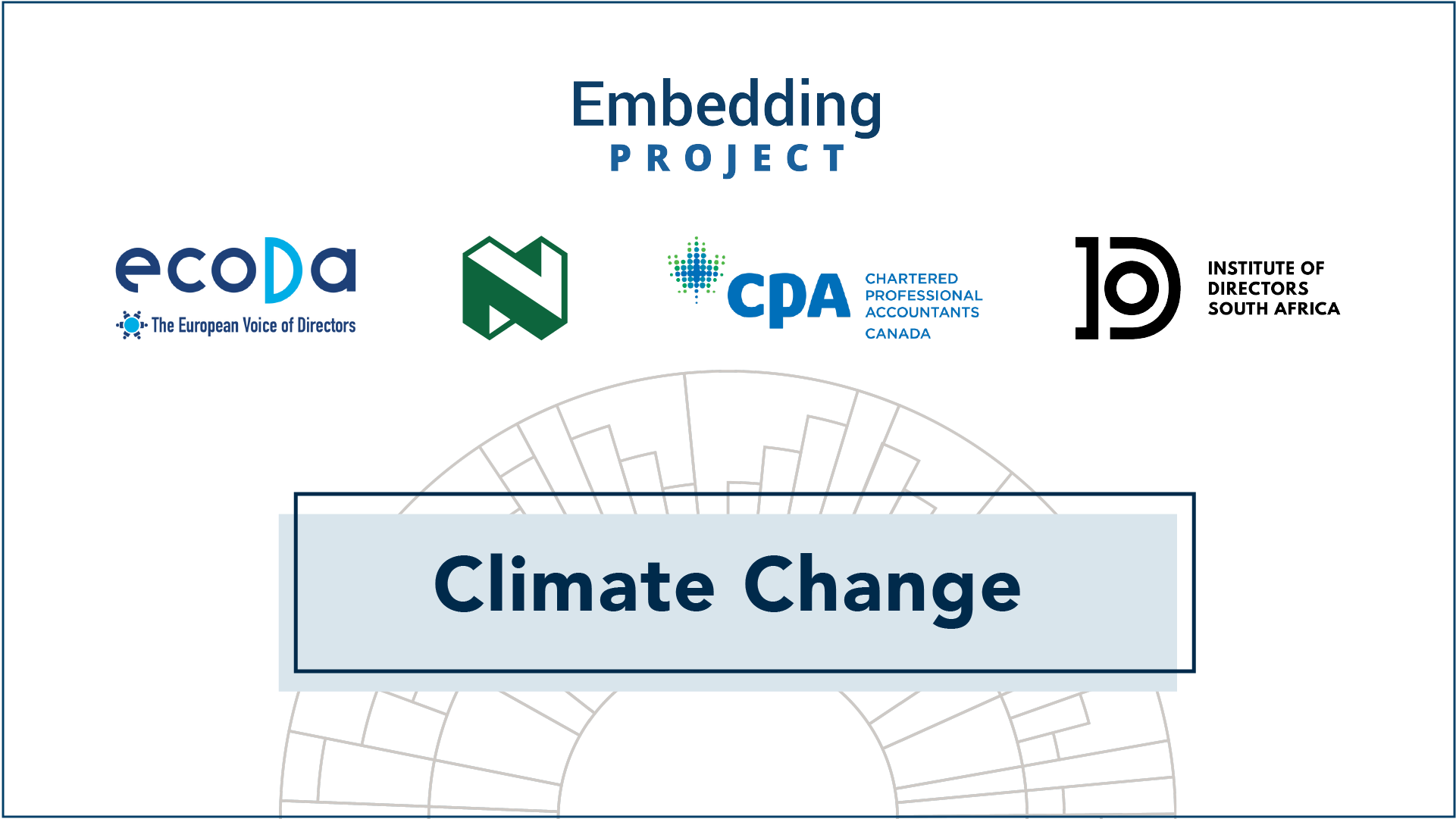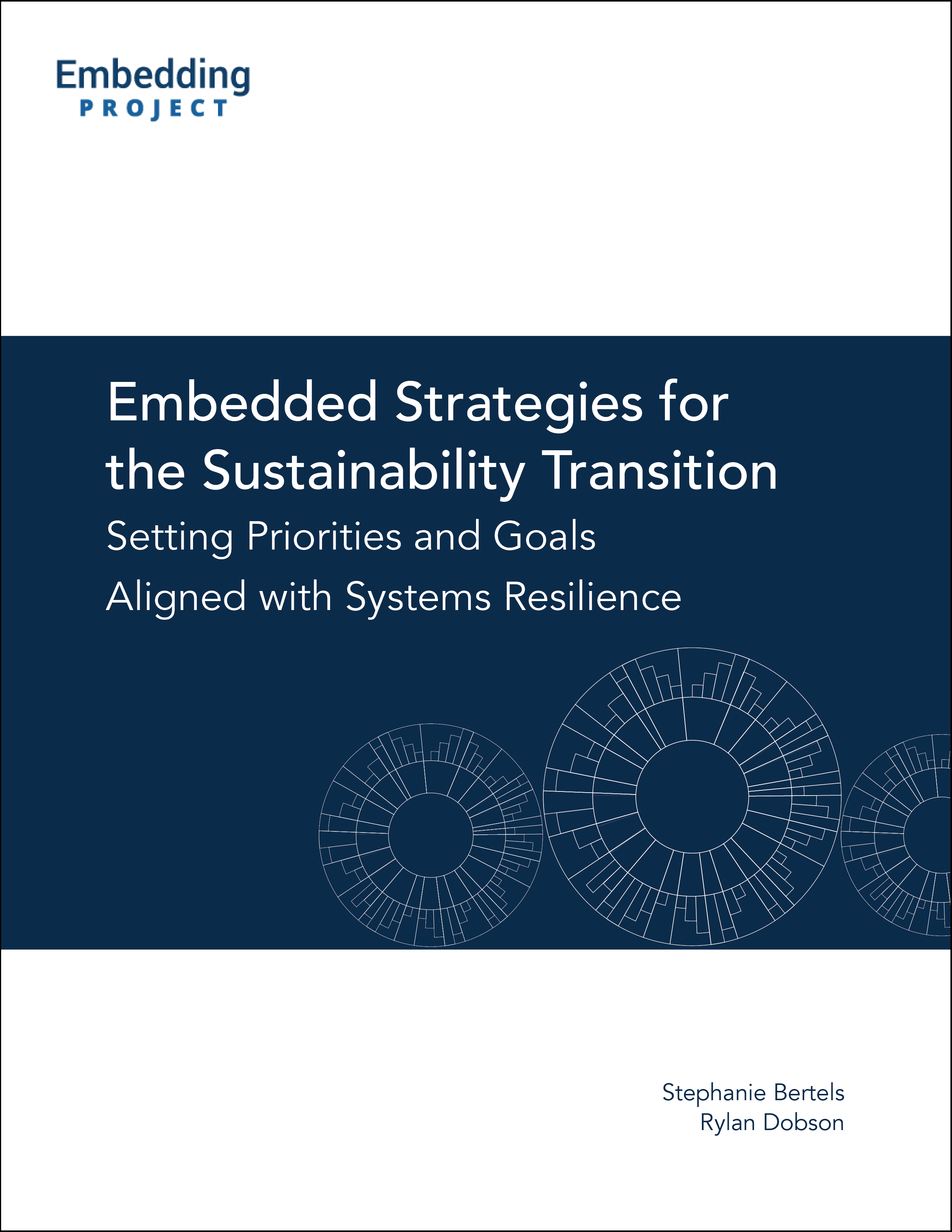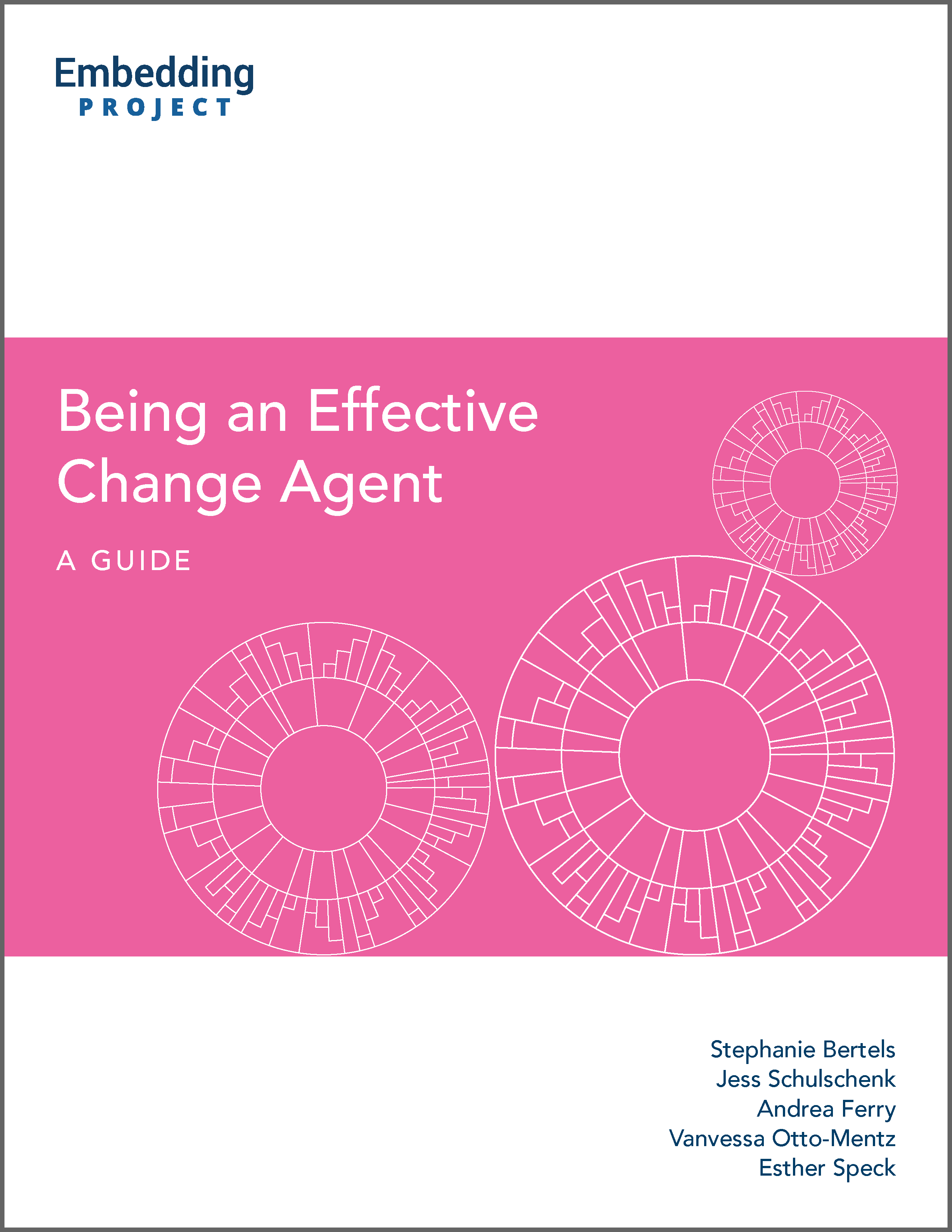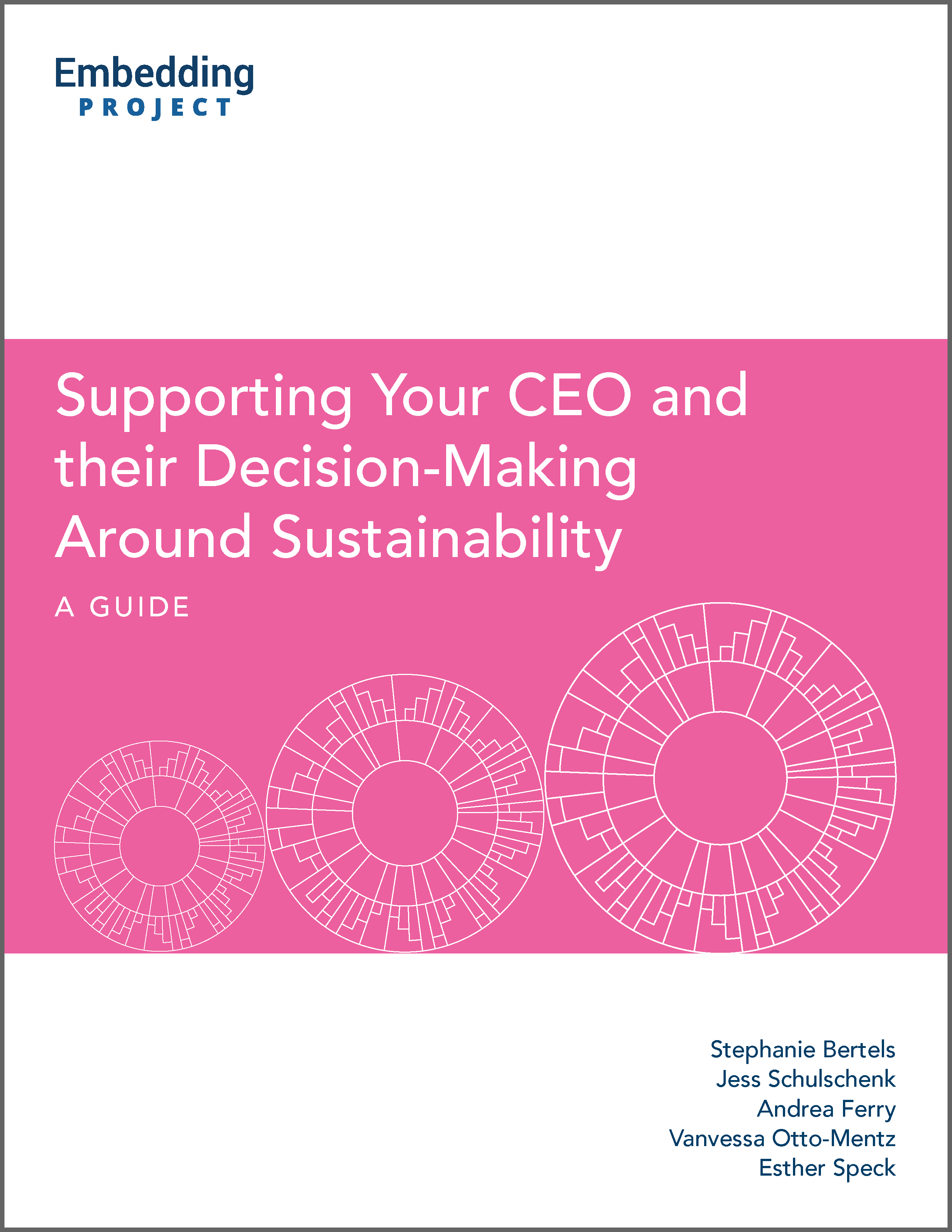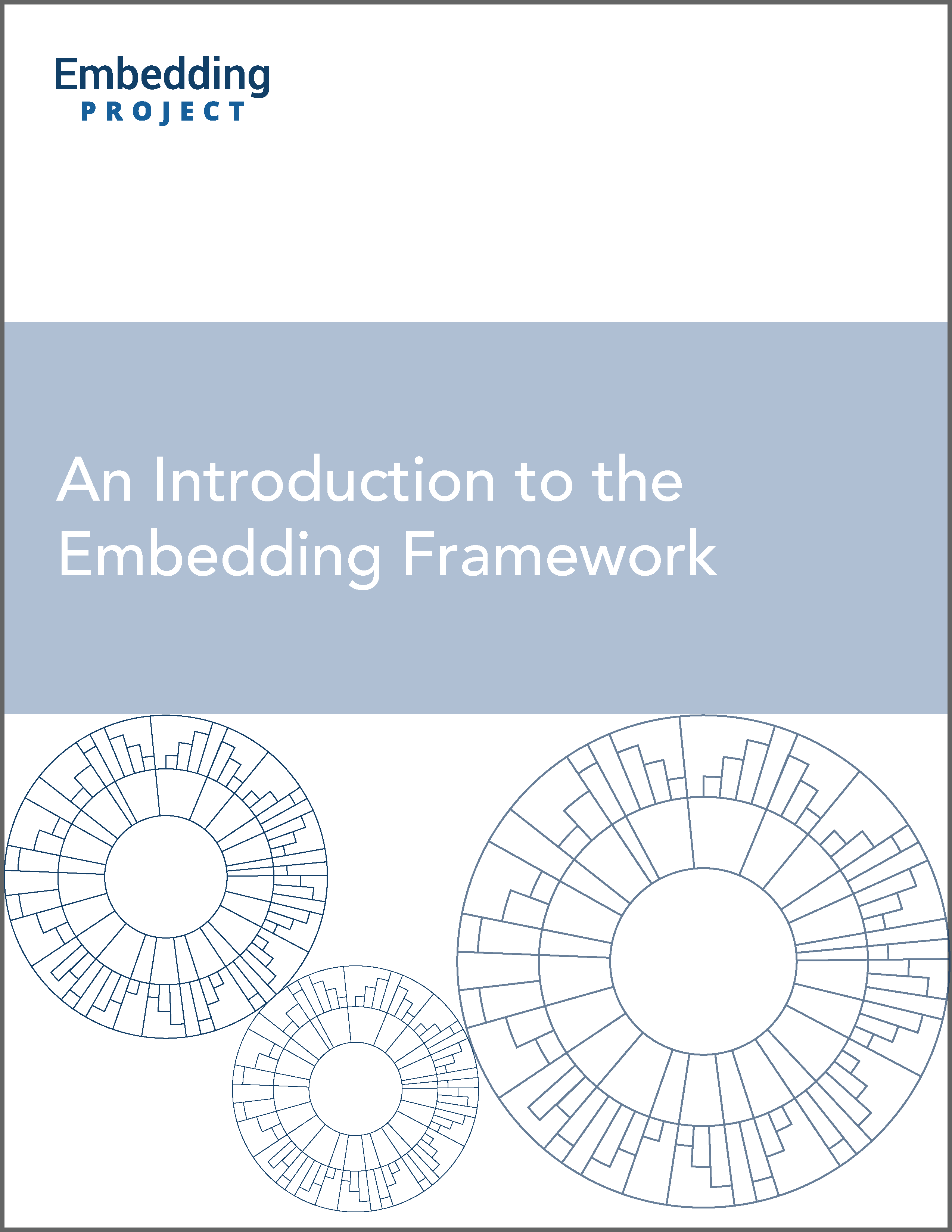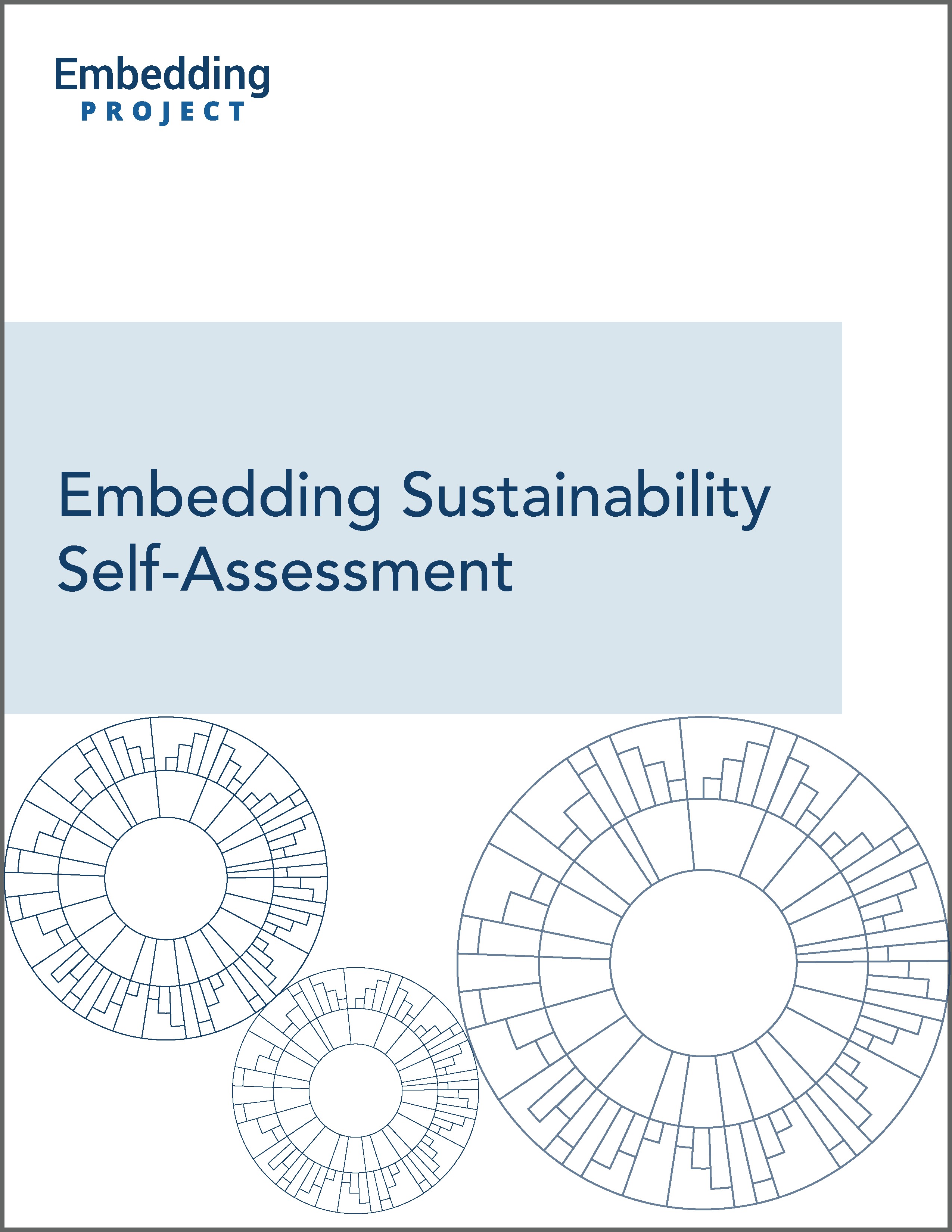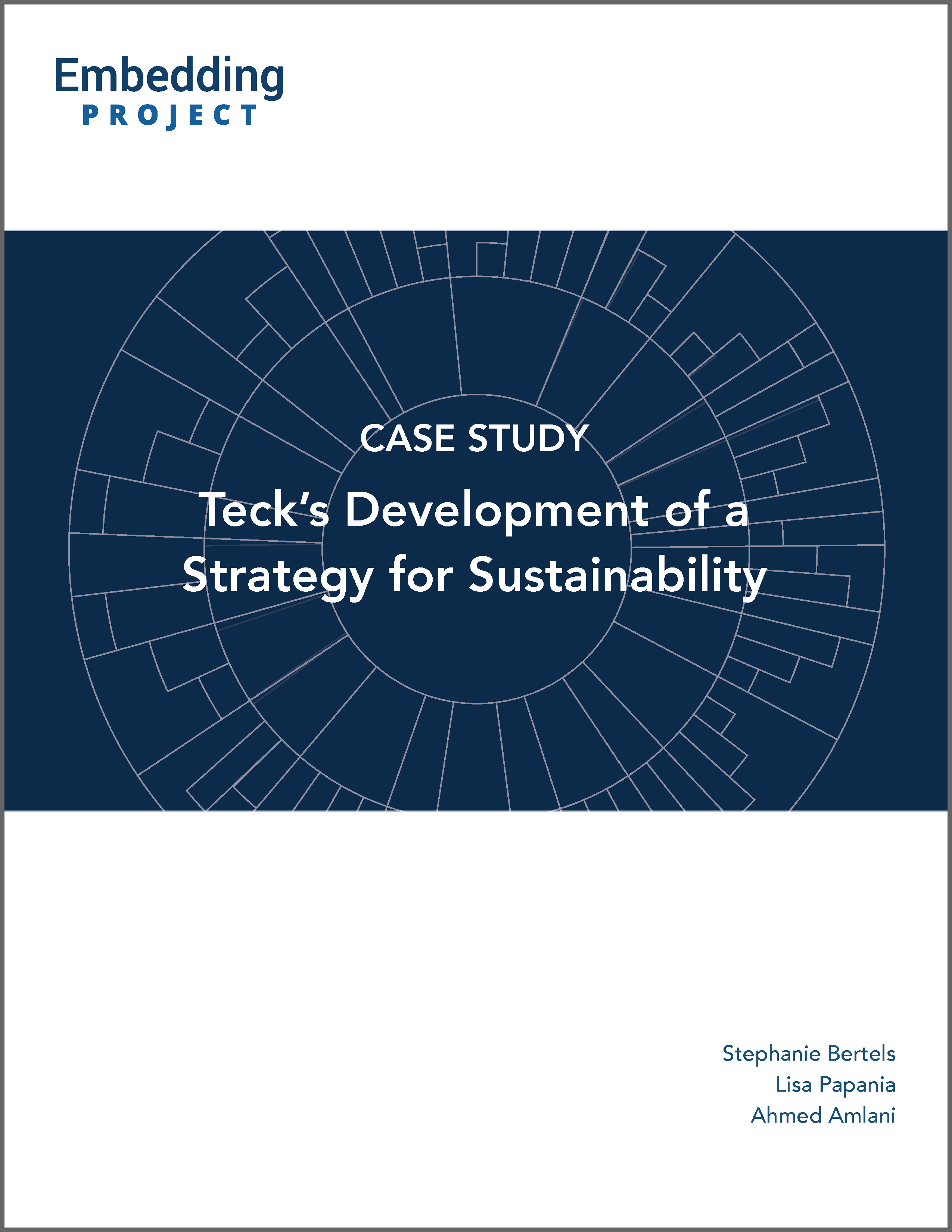Resources by Embedding Project
Share these Resources on:LinkedIn
Getting Started Guides: Pollutants
Companies should take a risk-based approach and work to eliminate processes and materials that result in pollutants and seek to understand the rates at which pollutants can be safely assimilated by the environment. Companies should control and limit resulting impacts on the environment and civil society.
Anchored in research, our series of Getting Started Guides on Pollutants will help your company understand how tackle the various sub-issues that relate to pollutants.
Pollutants in Air and Water: A Getting Started Guide
Metals: A Getting Started Guide (forthcoming)
Nitrogen and Phosphorus: A Getting Started Guide (forthcoming)
Noise, Light, and Radiation: A Getting Started Guide (forthcoming)
Pharmaceuticals, Endocrine-disrupting Chemicals, and Antimicrobials: A Getting Started Guide (forthcoming)
Human Rights: A Getting Started Guide
Human rights ensure that everyone can live a life of dignity and respect, without discrimination or deprivation. The full set of rights cover a broad range of topics relevant to business operations and relations. This Human Rights: A Getting Started Guide takes a holistic look at the topic of human rights and aims to support your company in building the foundation for managing human rights risks across your organisation and business relationships.
Getting Started Guides: Rights and Wellbeing at Work
Workers are entitled to numerous human and group rights while they are at work. Companies must ensure to respect these rights and not infringe upon them outside of work, and create a workplace culture and conditions that continuously enable workers’ enjoyment of their rights.
Anchored in research, our series of Getting Started Guides on Rights and Wellbeing at Work will help your company understand how tackle the various sub-issues that relate to workers' rights.
We recommend that you start with our broad guide providing an introduction to human rights:
Human Rights: A Getting Started Guide
And then proceed to the individual topics:
Human Dignity and Integrity (Tackling Modern Slavery): A Getting Started Guide
Safe and Healthy Working Conditions: A Getting Started Guide
Fair Compensation: A Getting Started Guide
Company-Worker Relations: A Getting Started Guide
Respectful, Equitable, and Inclusive Workplaces: A Getting Started Guide
Workforce Planning and Employee Development: A Getting Started Guide
Taking a Credible Position on Nature
There is growing pressure on companies to publicly acknowledge the unprecedented nature loss we face, and what they plan to do to address it. To help them do so, we reviewed over 1,000 statements on nature loss, biodiversity, and ecosystem stewardship from a wide range of geographies and industries, and identified examples of how companies are explaining the issue of nature loss, linking the issue of nature loss to their strategy, and clarifying their commitments to protect and restore nature. We hope this guide is helpful to you in articulating your own credible position statement on protecting and restoring nature.
Getting Started Guides: Climate and Energy
As the impacts of climate change worsen, the resilience of our environmental, social, and economic systems will be further threatened.
To help you understand how to get started on climate risk, adaptation, and climate mitigation, we have developed two guides that tackle sustainability sub-issues within climate and energy: Climate Risk Preparedness and Adaptation and Climate Mitigation (Decarbonisation and Carbon Removal).
Getting Started Guides: Water
Water resources, while renewable, are finite and increasingly under stress. While we’ve seen many companies realise that they need a strategy for water, they often lack clarity on the work needed to develop and achieve their goals.
To bridge this gap, we have developed a series of Getting Started Guides that tackle specific sustainability sub-issues within water: Water Stewardship, Water Quantity, and Water Quality.
Getting Started Guides: Nature
The wellbeing of society and business depends on nature. Our series of Getting Started on Nature Guides aim to support your company as it begins or revisits a strategy on specific sustainability sub-issues within nature. The guides help build a foundational understanding of the issues and provide clarity on the work ahead.
Becoming an Agent of Change
This guidebook is based on a multi-year research project we undertook to explore: 'Why and how do privileged insiders become agents of change, challenging institutions for broader societal benefit?' We share what we have learned about the process of becoming an agent of change, incorporating the experiences of the change agents we interviewed in their own words. We hope that this guide helps you to reflect on your own journey of change.
Getting Started Guides: Waste and Circularity
Our linear economy is not sustainable. While many companies realise that they need a strategy to handle waste, they often lack clarity on the work needed to develop and achieve their goals.
To bridge this gap, we have developed three separate guides that tackle specific sustainability sub-issues within waste and circularity and aim to support your company as it begins or revisits its strategy in this area. The guides help build a foundational understanding of the issues and provide clarity on the work ahead.
Getting Started Guides: An Introduction
Whether you are developing your first strategy for sustainability or refining an existing one, our Getting Started Guides can help provide clarity on the work ahead. Getting Started Guides: An Introduction shares our overall approach and clarifies the value of setting a clear strategy anchored in your company’s most material issues. It also explains key concepts that underpin the work outlined within each guide, including building an understanding of system thresholds and process-based interim targets.
You can also find each of our issue-specific Getting Started Guides below.
Sustainable Procurement Wheel
Our Sustainable Procurement Wheel helps companies to embed sustainability across their procurement and supply chain practices.
Based on research with leading companies, we have identified key practices and curated a selection of the most relevant resources and tools to help you implement them. The inner wheel follows the procurement lifecycle and the outer wheel looks at broader practices supporting change.
EDI Leading Practices: A Guide for Companies
Workplace equity, diversity, and inclusion (EDI) is a complex and rapidly evolving space, and increasingly, companies are interested in understanding how to meaningfully advance EDI in their organisations. To help them do so, we consulted EDI research and guidance, reviewed practices of over 100 companies, and sought input from practitioners across a range of industries and geographies. Our Equity, Diversity, and Inclusion Leading Practices Guide offers a comprehensive framework with practices, case studies, and resources to help organisations embed EDI into their strategy, structures, and culture.
Collaborating for Value Chain Decarbonisation
With the urgent need to reduce global emissions, rapid decarbonisation of our economy is essential, and the key is collaboration across the value chain. Our guide provides practical advice and examples to help companies support their supply chain partners to decarbonise.
You'll find advice on how companies are prompting, influencing, supporting, and investing in their value chain and resources and ideas for how to support six key decarbonisation pathways: renewable energy adoption; energy efficiency and conservation; logistics; materials stewardship and waste; lower-impact agriculture and land-use; and carbon removal.
Addressing Scope 3: A Start Here Guide
A guide for leaders of companies of all sizes to understand the basics of Scope 3 emissions and how companies should begin to take credible action. The guidance is anchored in the real-world experience of companies that are already navigating this journey.
Life Cycle Thinking
This guide explains how life cycle thinking and mapping help you identify and better understand the potential impacts of your products and services on people and the environment. By exploring environmental and social impacts from your raw materials, through manufacturing and distribution, to customer use, and end of life, you can identify hot spots and leverage points to take action on.
Emerging Trends and Best Practice in Climate Position Statements
Climate change is happening, and the impacts are intensifying. Companies are expected to take a position on climate change and outline an appropriate response. The Embedding Project’s climate position guide helps companies to articulate a concise and transparent board level position on climate change. Drawing on in-depth analyses of over 2,600 climate position statements, this guidebook provides a checklist for crafting a climate position statement with concrete examples from a range of industries and global settings.
Developing Position Statements on Sustainability Issues
There is growing pressure among companies to link social and environmental limits to corporate strategy and goal-setting. However, the result is often a lengthy document that fails to make strategic connections between specific issues and their implications on business decision-making. We developed this guidebook to help you articulate a concise and transparent board level position on key environmental, social, and governance issues. Drawing upon in-depth analyses of over 4,000 board position statements; over 200 interviews with CEOs, directors, and board chairs; and concepts outlined in our series on the Road to Context, this guidebook provides a checklist for crafting a contextual board position statement and includes examples from a range of industries and global settings.
Decolonisation in Imagery and Language: Guidance and Resource List
Imagery and language play a significant role in shaping how the stories we tell interact with the perceptions of others. This short resource offers general guidance and a resource list for remaining mindful when using images, stories, and narratives of peoples faced with historical and continued colonial oppression and its legacies in your work.
Scan: A Comprehensive List of Sustainability Issues for Companies
More companies are becoming interested in understanding how environmental and social factors may impact their business and what impacts their business may have on these issues. This guide provides a comprehensive list of emerging environmental, social, and governance issues, to help you reflect on your company’s impacts and identify where to prioritise action and allocate resources.
Sustainability Goals Database
Are you designing new goals or interested in benchmarking your goals against leading practice? To help advance progress in setting credible goals, we will maintain a public goals database containing leading sustainability goals and commitments set by large companies globally. Search by issue, company, industry, goal type, or SDG target.
If you are aware of goals that take a credible approach that should be featured in our database, please let us know.
Position Database
Is your company interested in taking a public position on an ESG issue?
To help companies develop strong, clear positions, we will maintain a public database containing leading positions articulated by large companies globally.
Our governance guide outlines how companies should articulate their positions, and we have applied this criteria to the positions featured in this database.
Getting Started on Incorporating Sustainability into Public Procurement
Public sector organisations have an opportunity, and an obligation, to ensure that the goods and services they buy align with their environmental and social commitments. This guide helps public procurement professionals to integrate sustainability considerations into public procurement processes and to improve the sustainability outcomes of their buying decisions.
Respecting Human Rights in Your Supply Chain: A Tip Sheet for SMEs
Every company, including a small or mid-sized enterprise (SME), has an obligation to respect human rights. This includes when you are buying goods and services. This guide explains how to assess possible human rights impacts in your supply chain and steps your company can take to prevent or mitigate them.
Sustainable Procurement: A Tip Sheet for SMEs
Companies are recognizing that the goods and services they buy contribute to their environmental and social footprint, often quite significantly. This tip sheet focuses on helping you to improve the sustainability outcomes of your company’s buying decisions and improve the impact your company has on the environment and on communities.
Climate Change and Climate Risk Oversight
Climate change is a planetary emergency that presents severe risks to businesses, society, and the global economy. No business, regardless of the sector, is immune – and businesses around the world have a key role to play to help avoid the worst impacts. This guide will help you understand the science behind climate change, why climate change matters to your business, and what actions your business can take to accelerate the transition to a net-zero, climate-resilient future.
Climate Risk Oversight for Directors
This 4-part video series will help corporate directors and leaders understand the risks of climate change and their role and fiduciary responsibilities to oversee these risks. We have also created videos specific to the Canadian and South African context.
Shaping Your Organisation’s Narrative Infrastructure
Stories matter, they have an enormous influence on decision-making in organisations.
How often do you stop to reflect on the collection of stories that get told in your organisation and whether you might need to shift them to better embed sustainability?
This guide builds on our work on Storytelling for Sustainability and is based on four years of research and over 100 interviews in twenty different global companies exploring the impact of organisational narratives and how change agents helped to shift them to better support strategic decision-making aligned with sustainability. As with all of our resources, the ideas and guidance presented here have been piloted with several of our partner companies and we welcome your feedback to keep improving them.
Understanding Community Resilience
The success of a company is directly linked to the resilience of the communities where it operates, as well as the resilience of the communities of its workers, its suppliers, and its customers. Increasingly, communities around the world are starting to contemplate their resilience and long-term sustainability. As a result, companies are expected to account for their impacts on community resilience. This guide will help you to understand why community resilience matters, how communities are beginning to approach resilience, and how your company can explore its role in fostering community resilience.
Embedded Strategies for the Sustainability Transition
It is time for companies to take a very different approach to corporate strategy.
Our Embedded Strategies guide helps companies respond to the growing calls for businesses to articulate their purpose and their strategy in alignment with the need to shift the global economy towards the reduction of inequality, a rapid climate transition, the preservation of biodiversity, and the elimination of waste.
This guide will help you to develop a contextual strategy and goals that ensure your company is doing its part to maintain the resilience of key social and environmental systems.
Building on our Road to Context guide with insights from 300+ interviews with senior executives, CEOs, board chairs, and directors, as well as our experiences supporting companies around the world, it outlines resources and tactics that can help your company to scan for emerging issues and risks; understand their implications for your business; understand your impacts and your potential for positive influence; prioritise where it makes sense to direct your efforts; and set your strategy and goals in alignment with delivering systems value.
Embedded Strategies for the Sustainability Transition: Executive Summary
This primer provides a summary of concepts and tools outlined more fully in our Embedded Strategies for the Sustainability Transition guide. Building on our flagship Road to Context guide, our Embedded Strategies guide will help you to develop a credible strategy and goals that ensure your company is doing its part to maintain the resilience of key social and environmental systems.
Embedded strategies respond to the growing calls for businesses to articulate their purpose and their strategy in alignment with a rapid climate transition, reducing systemic inequality, preserving biodiversity, and the elimination of waste.
Partnering for Community Resilience: South African Case Studies
Proactive companies are recognising the strategic relevance of community resilience to their short- and long-term success. Community resilience is a positive dynamic between social, economic, and ecological systems that ensures community wellbeing and effective responses to shocks and disruptions, such as fires, droughts, or economic crises. This guide shares five in-depth case studies of companies engaging in partnerships for community resilience in South Africa. We distil the key lessons from these case studies for corporate managers who are planning or implementing partnerships for community resilience.
Storytelling for Sustainability
When people within organisations communicate, they often do it through stories. Combining research with stories from practitioners working to embed sustainability within their organisations, our “Storytelling for Sustainability” guidebook was developed through the Embedding Project's Community of Practice process to help you:
Understand what storytelling looks like in practice, and reflect on this in the context of your organisation
Develop a sense of why stories are important for embedding sustainability
Learn from other practitioners’ experiences with storytelling to better plan your own efforts
Being an Effective Change Agent
How can you prepare yourself to be a more effective sustainability change agent? This guide was designed to share insights on how change agents can support their CEO and influence thinking on sustainability. It is based on a review of prior academic research on CEO decision-making and combined with the practical experiences and insights gleaned from interviews with over 200 CEOs, board members, and sustainability executives. It explores a broad range of global companies and industries including finance and insurance, material extraction, retail, manufacturing, transportation, logistics, utilities, and agribusiness, as well as a diverse array of ownership structures, including public corporations, privately owned businesses, and co-operatives.
To further support you in bolstering your own effectiveness, we have also developed the Being an Effective Change Agent: Personal Inventory. We encourage you to use this as a tool for reflection, and to help you plan your future personal development.
Supporting Your CEO
CEOs play a crucial role in embedding sustainability into the strategies and day-to-day decisions of their organisations. Based on over 200 interviews with CEOs, board members, and sustainability executives from a range of global companies and a review of prior academic research on CEO decision-making, we developed these resources to share insights on how corporate change agents can help influence CEO thinking on sustainability.
In our Guide, we describe each of the characteristics in detail, incorporating as many direct experiences as possible to help sustainability change agents think about how to support their CEO. We also developed a Tactical Inventory to help change agents reflect on these tactics and to identify which of them might be most appropriate for their own setting.
An Introduction to the Embedding Framework
Proactive companies are working to embed sustainability across their operations and into their decision-making. This guide is a practical starting point to help you understand what embedding looks like, how to assess your company’s progress, and how to prioritize your efforts.
Embedding Sustainability Self-Assessment
Interested in understanding your own company's journey? Consider undertaking this free, preliminary practices self-assessment.
Teck's Development of a Strategy for Sustainability
This case provides an insider's perspective on the development of Teck's first strategy for sustainability. It explores the company's early rationale behind developing and implementing a multi-year strategy, and provides insights on how sustainability champions within the company used environmental and social megatrends to envision and co-create a long-term approach to sustainable business. This case also provides insights on the major obstacles and lessons that staff and leadership learned through this transformative experience.
